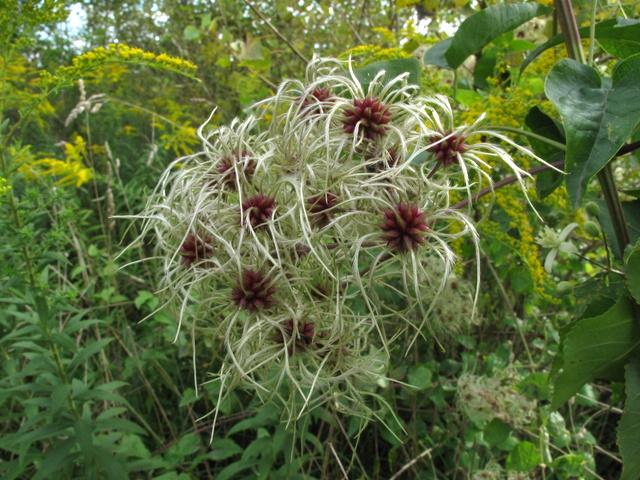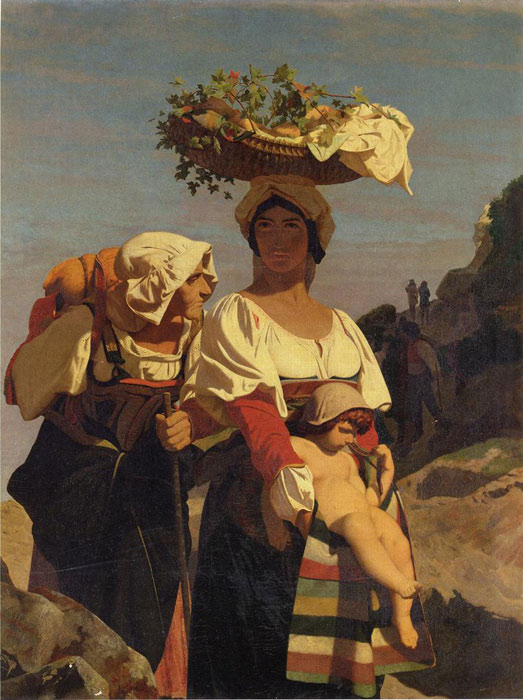Spring is blooming all around us, re-awakening our senses: the birds are singing from dawn to dusk, the hills are painted in many shades of green, the fields are carpets of flowers, the air smells of mint, thyme and other wild herbs, our skin is caressed by the first warm sun and a fresh breeze.
Ummmm … my mouth is watering just looking at all those fresh leaves and buds appearing on the plants: borage, primroses, dandelions, hop, lemon balm, sorrel, and last but not least, clematis vitalba.

Clematis Vitalba, showing the feathery fruits.
Clematis vitalba, commonly known as vitalba, is a plant that grows wild all around us here in Lunigiana. The name vitalba comes from the Latin vitis alba, which means vite bianca (white grape), due to its white feathery appearance after it has blossomed, which also gives rise to its most common popular name, barba di vecchio (old man’s beard).
Another popular name for vitalba is erba dei pezzenti or dei cenciosi (herb of the beggars). This name comes the fact that it was used by beggars, who rubbed it on their skin to cause sores, thus making themselves appear more pitiful. In fact, vitalba contains alkaloids, which are very irritating for the human skin. However, the tips of the young shoots are not toxic, and have long been used by the contadini (farmer peasants) as a free ingredient in their cooking. One particular traditional contadino recipe is a delicious frittata. Here’s the recipe, for those of you who dare!:

If you don’t have a carrier bag a basket will do.
Italian Peasant Women and Infant by Jean Leon Gerome 1849.
Now, if you don’t have vitalba growing wild where you live, you’ll need to come to Tuscany with a carrier bag, go for a walk in the countryside and, when you find a nice healthy example, use your thumb and index finger to break off the tips of the young sprouts just below the first two leaves. In Florentine dialect, these young shoots are called vitarbini. Be sure to collect a large quantity, because once cooked they shrink a lot.
When you get home, wash the vitarbini, and cook them in boiling water until tender but not mushy. Drain them, and run them under cold water to prevent over cooking. Then, using your hands, squeeze out as much water as possible.
Peel a clove of garlic and crush it with the flat of a knife. Put some olive oil in a frying pan, when the oil is hot add the garlic. After a few seconds, add the tips of the vitalba, a pinch of salt, and then stir them until all the water has evaporated.
Beat the eggs in a plate, then pour them on the top of the vitarbini. After about a minute or two turn the frittata upside-down with the help of a lid or a flat dish. Cook for another minute, then serve warm. This recipe also tastes great served cold.
Buon Appetito!







Comments:
Sharon Wells:
This was fascinating — in England, clematis vitalba, is known as ‘old man’s beard’ and is supposed to be a stomach irritant if ingested. Is it really the same plant? It is so invasive in our garden, we would love to cook and eat it!
Geoff:
@Sharon Wells Ciao Sharon, I quote from our post: “which also gives rise to its most common popular name, barba di vecchio (old man’s beard)”
Yes, it’s very invasive and destructive here in Lunigiana as well. Make the most of those tender shoots while they last 🙂
A presto, Geoff